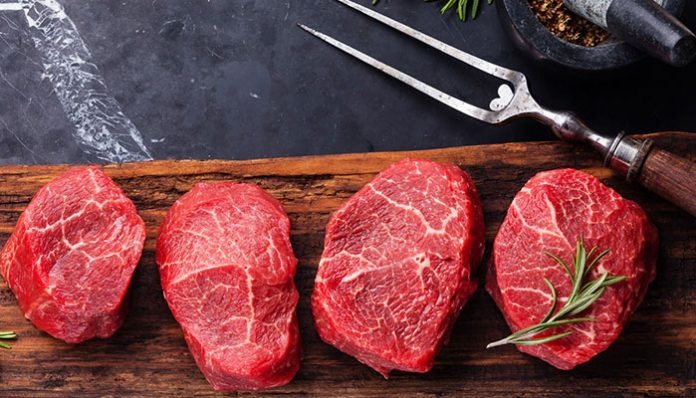
Steak is an important part of any meat lover’s diet. With this comes a need to understand the difference between various kinds of steak cuts and the effects these have on the taste and tenderness of your meat. High-quality steak cuts will usually be more expensive, but knowing which steak cuts you prefer will make shopping much easier. There are so many different types of steak cuts and each come with strengths and weaknesses. Consider this your ultimate steak cuts guide. After reading this article you can confidently navigate your way around a BBQ restaurant and a butcher’s shop.

Before we discuss some best steak cuts for grilling or pot roasting, a complete picture of different steak cuts would be helpful for you to understand their sources and shapes. The infographic provided above might give a better understanding.
1. The Ribeye
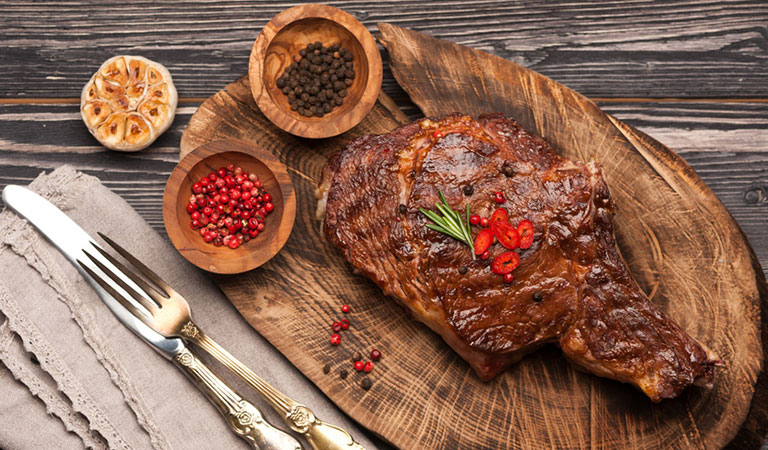
- Also known as: Beef Rib Steak, Saratoga Steak, Cowboy Steak. If your rib eye is boneless it’s known as Beauty Steak.
- Where it’s cut from: As its name implies, the Ribeye is cut from the rib section of the cow, particularly the slabs of meat that span across ribs six through twelve.
- It looks like: A good ribeye has a large cap or lip. In other words, it is a thick slab of meat with relatively little fat.
- It tastes like: Some steak aficionados would argue that ribeye is the best types of steak cuts as it offers a lot of flavors but remains wonderfully tender.
- Cooking method: Ribeye are notorious for being a versatile steak to cook with. An experienced chef or home cook alike can fry, grill or broil a tasty ribeye. You can also try these 6 easy steps to smoking ribs at home.
2. New York Strip
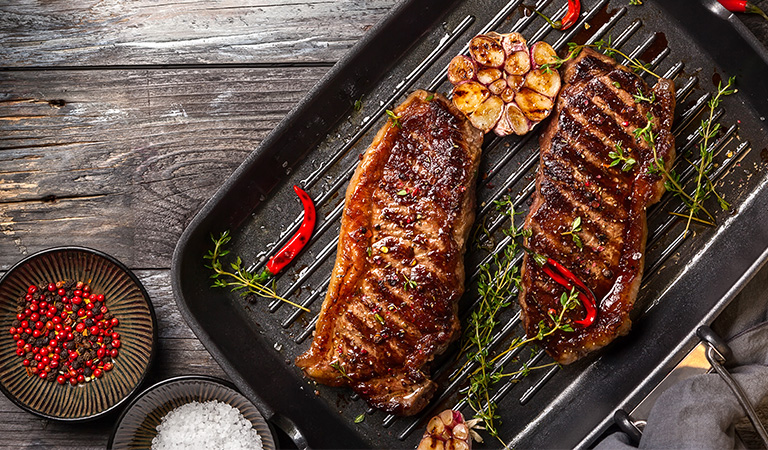
- Also known as: Made famous by Delmonico’s restaurant, founded in 1827 in NYC. This restaurant offered a short loin as one of their signature dishes and so the cut became known as Delmonico Steak after the restaurant that made these cuts popular.
- Where it’s cut from: Cut from a group of muscles that do very little work over the cow’s life and are thus very tender, New York Strip is cut from short loin part of the sirloin.
- It looks like: New York Strip steak has a fine-grained texture and no excess fat. The fat is also usually concentrated on a single side of the cut.
- It tastes like: Enough fat to produce a lot of flavors though not as tender as ribeyes.
- Cooking method: The concentrated fat on one side of a typical New York Strip steak means that it’s best to pan-sear or broil this particular cut in order to get the most out
3. Tenderloin
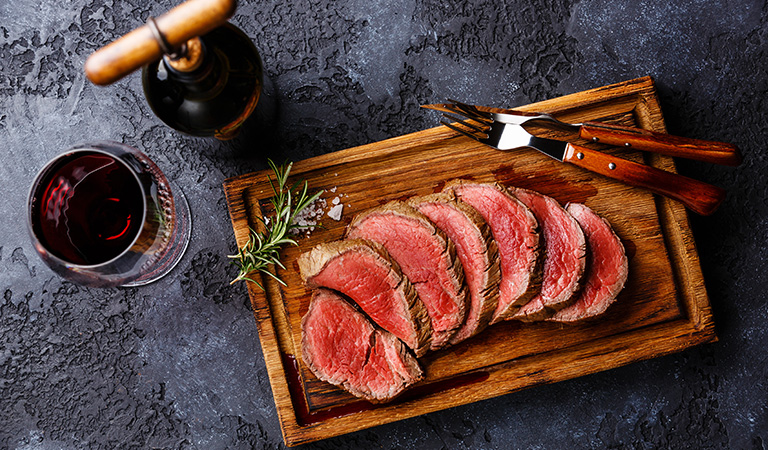
- Also known as: Filet mignon, Châteaubriand
- Where it’s cut from: Any cut from the short loin and sirloin areas that run wide at the top and taper off at the tail under the ribs is tenderloin.
- It looks like: This is one of the leanest types of steak cuts. Tenderloin is a thick cut with little fat.
- It tastes like: Tenderloin is known to be unbelievable tender and buttery in texture and flavor.
- Cooking method: Cooking the meat of this cut thoroughly will require two steps. You have to sear the outside of the steak until brown and cook the inside in an oven either before or after. Make sure to cook your meat thoroughly, tenderloins are notorious for uneven cooking if done improperly.
4. T-Bone

- Also known as: Porterhouse steaks, though there is a small difference between t-bone and porterhouse
- Where it’s cut from: the short loin or sirloin as its known in Commonwealth countries.
- It looks like: A T-bone is easy to spot because it has a large t-shaped bone in the middle of the slab of meat.
- It tastes like: The strip section of the meat tastes like strip and tenderloin section taste like tenderloin, which makes it one of the few cuts with different kinds of textures in a single cut.
- Cooking method: Cooking T-bones can be a pain because of the bone in the middle. The bone makes it hard or nearly impossible pan-sear or fry. Luckily, however, a T-bone cut is usually thin so grilling or broiling would work best.
5. Flank

- Also known as: London Broil, fajita beef
- Where it’s cut from: the abdominal area
- It looks like: Flank steak is long and flat with a bright color and grainy texture.
- It tastes like: Flank is usually cut across the grain in order to make beef more tender since this cut comes from much-used muscles. Flank is semi-tender and usually comes more finely cut than other beef.
- Cooking method: Flank steak is a very comfortable meat to cook with for beginners. Its versatility means that it can be broiled or pan-seared just as easily.
6. Porterhouse
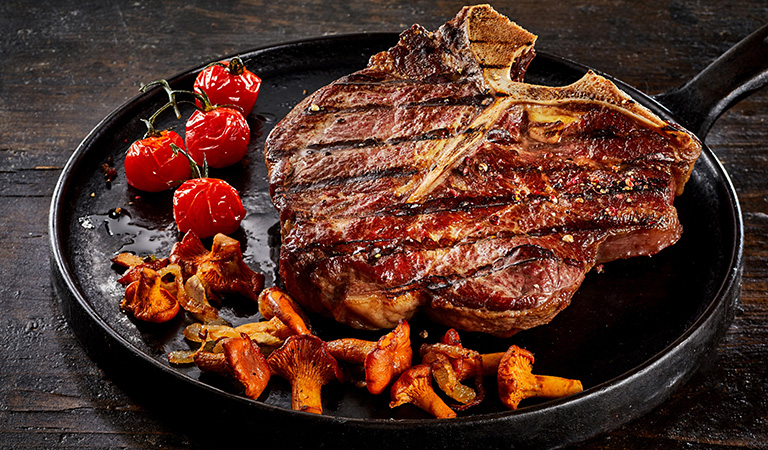
- Also known as: T-bone
- Where it’s cut from: the front section of the tenderloin
- It looks like: porterhouse is cut from the same section a T-bone so it has that same-shaped bone.
- It tastes like: Since porterhouse is essentially a bigger cut of T-bone, a single cut can provide different levels of tenderness and different texture.
- Cooking method: Any meat with a lot of bone is best grilled with the right tips. Pan searing is too difficult with these cuts as the bones get in the way.
7. Top Sirloin
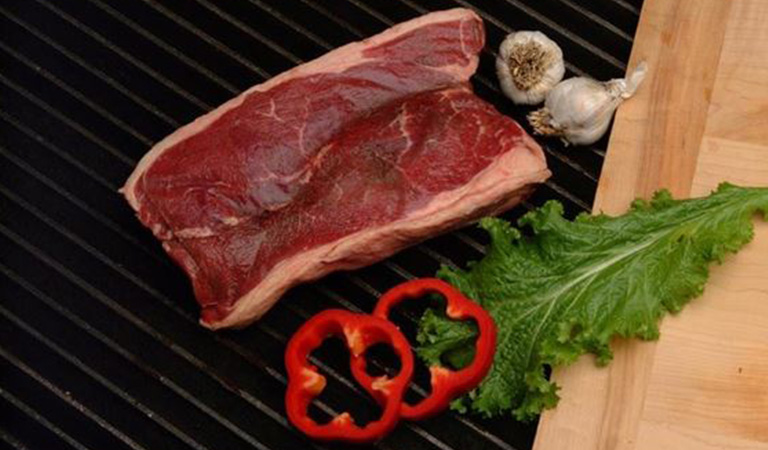
- Also known as: D-rump, butt steak
- Where it’s cut from: Top sirloin is cut from the subprimal loin, which includes the gluteus medius muscles. In other words, these cuts come from near the leg and butt of the cow.
- It looks like: Since it’s cut from a very meaty area of the cow, you will not find bones and not much fat or connective tissue in these cuts.
- It tastes like: A top sirloin is going to be a bit tough but the grainy texture and leanness of the cut will more than make up for that.
- Cooking method: A lot of different cooking methods work with the top sirloin cut but typically sirloins are pan-fried, broiled or sauteed.
Conclusion
These have been the most important and popular types of steak cuts. With this steak cuts guide on Grills Forever, you can proudly say you know your way around the different types of steak cuts that are most beloved by butchers and beef lovers alike.






















































